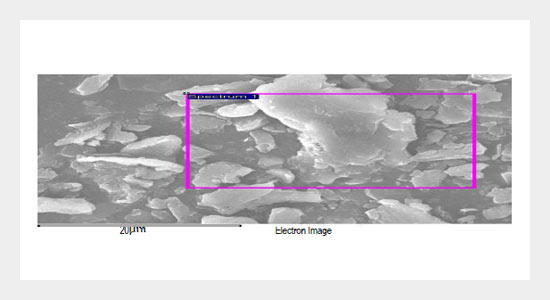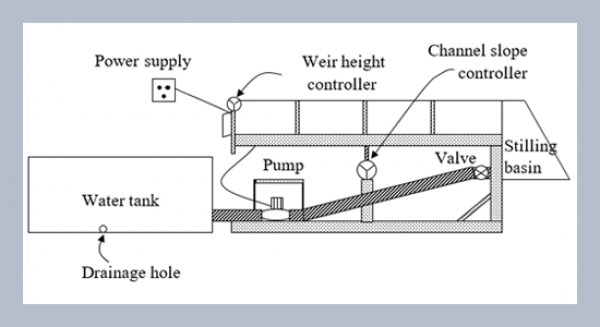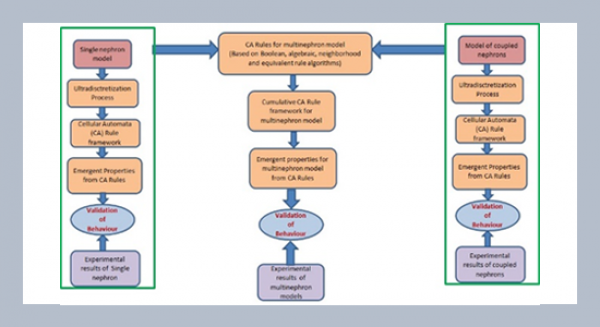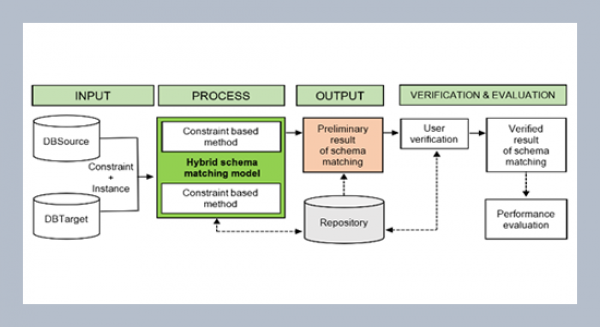Darapureddi Krishnaa* and R. Padma Sreeb aDepartment of Chemical Engineering, M. V. G. R. College of Engineering, Vizianagaram, India
bDepartment of Chemical Engineering, Andhra University College of Engineering (A) Visakhapatnam, India
Download Citation:
|
Download PDF
An artificial neural network (ANN) model was developed to predict the removal efficiency of chromium (VI) from aqueous solution using a Borasus flabellifer coir powder as adsorbent. The effect of operational parameters such as pH, adsorbent dosage, and initial chromium (VI) concentration are studied to optimize the conditions for the maximum removal of chromium (VI) ions. The ANN model was developed using 54 experimental data points for training and 16 data points for testing by a single layer feed forward back propagation network with 18 neurons to obtain minimum mean squared error (MSE). A tansigmoid was used as transfer function for input and purelin for output layers. The high correlation coefficient (R2average-ANN =0.992) between the model and the experimental data showed that the model was able to predict the removal of chromium (VI) from aqueous solution using Borasus flabellifer coir powder efficiently. Pattern search method in genetic algorithm was applied to get optimum values of input parameters for the maximum removal of chromium (VI).ABSTRACT
Keywords:
Biosorption; borasus flabellifer coir powder; chromium (VI).
Share this article with your colleagues
[1] Volesky, B. and Holan, Z. R. 1995. Biosorption of heavy metals. Biotechnology Progress, 11: 235-250.REFERENCES
[2] Veglio, F. and Beolchini, F. 1997. Removal of metals by biosorption: a review. Hydrometallurgy, 44: 301-316.
[3] Kowalshi, Z. 1994. Treatment of chromic tannery wastes. Journal of Hazardous Materials, 39: 137-144.
[4] Sikaily, A. E., Nemr, A. E., Khaled, A., and Abdelwahab, O. 2007. Removal of toxic chromium from waste water using green alga Ulva lactuca and its activated carbon. Journal of Hazardous Materials, 148: 216-228.
[5] Li, H., Li, Z., Liu, T., Xiao, X., Peng, Z., and Deng, L. 2008. A novel technology for biosorption and recovery hexavalent chromium in wastewater by bio-functional magnetic beads. Bioresource Technology, 99: 6271-6279.
[6] Gomez, V. and Callo, M. P. 2006. Chromium determination and speciation since 2000. Trends in Analytical Chemistry, 25: 1006-1015.
[7] World Health Organization. 2004. “Guidelines for drinking water quality”, 3rd ed., Genrva, 1: 334.
[8] Das, A. K. 2004. Micellar effect on the kinetics and mechanism of chromium (VI) oxidation of organic substrates. Coordination Chemistry Reviews, 248: 81-99.
[9] Zhou, X., Korenaga, T., Takahashi, T., Moriwake, T., and Shinoda, S. 1993. A process monitoring/controlling system for the treatment of waste water containing (VI). Water Research, 27: 1049-1054.
[10] Tiravanti, G., Petruzzelli, D., and Passino, R. 1997. Pretreatment of tannery wastewaters by an ion-exchange process for Cr (III) removal and recovery. Water Science and Technology, 36: 197-207.
[11] Seaman, J. C., Bertsch, P. M., and Schwallie, L. 1999. In-Situ Cr (VI) reduction within coarse-textured oxide-coated soil and aquifer systems using Fe (II) solutions. Environmental Science and Technology, 33: 938-944.
[12] Kongsricharoern, N. and Polprasert, C. 1996. Chromium removal by a bipolar electro-chemical precipitation process. Water Science and Technology, 34: 109-116.
[13] Pagilla, K. R. and Canter, L. W. 1999. Laboratory studies on remediation of Chromium-contaminated soils. Journal of Environmental Engineering, 125: 243-248.
[14] Chakravathi, A. K., Chowadary, S. B., Chakrabarty, S., Chakrabarty, T., and Mukherjee, D.
C. 1995. Liquid membrane multiple emulsion process of chromium (VI) separation from waste waters. Colloids and Surfaces A, 103: 59-71.
[15] Aksu, Z., Ozer, D., Ekiz, H. I., Kutsal, T., and Calar. A. 1996. Investigation of Biosorption of Chromium (VI) on Cladophora Crispata in Two-Staged Batch Reactor. Environmental Technology, 17: 215-220.
[16] Huang, S. D., Fann, C. F., and Hsiech, H. S. 1982. Foam separation of chromium (VI) from aqueous solution. Journal of Colloid and Interface Science, 89: 504-513.
[17] Park, D., Yun, Y. S., and Park, J. M. 2010. The past, present and, and future trends of biosorption. Biotechnology and Bioprocess Engineering, 15: 86-102.
[18] Mohan, D. and Pittman C. U. Jr. 2006. Activated carbon and low cost adsorbents for remediation of tri-and hexavalent chromium from water. Journal of Hazardous Materials, 137: 762-811.
[19] Gupta, S. and Babu, B. V. 2009. Utilization of waste product (Tamarind seeds) for the removal of Cr (VI) from aqueous solutions: Equilibrium, kinetics and regeneration studies. Journal of Environmental Management, 90: 3013-3022.
[20] Shafey, E. I. 2005. Behavior of reduction-sorption of chromium (VI) from an aqueous solution on a modified sorbent from rice husk. Water Air Soil Pollution, 163: 81-102.
[21] Sharma, A. and Bhattacharya, K. G. 2004. Adsorption of Pb (II) from aqueous solution by Azadirachta indica (Neem leaf powder). Journal of Hazardous Materials, B 113: 97-109.
[22] Hasan, S. H., Singh, K. K., Prakash, O., Talat, M., and Ho, Y.S. 2008. Removal of Cr (VI) from aqueous solutions using agricultural waste maize bran. Journal of Hazardous Materials, 152: 356-365.
[23] Bryant, P. S., Petersen, J. N., Lee, J. M., and Brouns, T. M. 1992. Sorption of heavy metals by untreated red Fir sawdust. Applied Biochemistry and Biotechnology, 34: 777-788.
[24] Song, W. X., Zhong, L. H., and Rong, T. S. 2009. Removal of chromium (VI) from aqueous solution using walnut hull. Journal of Environmental Management, 90: 721-729.
[25] Qaiser, S. 2009. Biosorption of lead (II) and chromium (VI) on groundnut hull: Equilibrium, kinetics and thermodynamics study. Electronic journal of Biotechnology, 11: 12-25.
[26] Krishna, D. and Padma Sree, R. 2012. Removal of Chromium (VI) from aqueous solution by limonia acidissima hull powder as adsorbent. Journal on future engineering and technology, 7: 27-38.
[27] Prakash, N., Manikandan, S. A., and Govindaranjan Vijayagopal, V. 2008. Prediction of biosorption efficiency for the removal of copper (II) using artificial neural networks. Journal of Hazardous Materials, 152: 1268-1275.
[28] Park, Y. S., Chon T. S., Kwak, I. S., and Lek, S. 2004. Hierarchical community classification an assessment of aquatic ecosystems using artificial neural networks. Science of the Total Environment, 327:105-122.
[29] Belanche, L., Valdes, J. J., Comas, J., Roda, I. R., and Poch, M. 2000. Prediction of the bulking phenomenon in waste water treatment plants. Artificial Intelligence in Engineering, 14: 307-317.
[30] Shetty, G. R. and Chellam, S. 2003. Predicting membrane fouling during municipal drinking water nanofiltration using artificial neural Networks. Journal of Membrane Science, 217: 69-86.
[31] Park, D., Yun, Y. S., Lee, D. S., Lim, S. R., and Park, J. M. 2006. Column study on Cr (VI)-reduction using the brown seaweed Ecklonia biomass. Journal of Hazardous Materials, B137: 1377-1384.
[32] Abhishek, K., Raj, K. R., Arora, J. K., and Srivastava, S. 2011. Artificial neural network modeling on predictions of biosorption efficiency of Zea mays for the removal of Cr (III) & Cr (VI) from waste water. International journal of mathematics trends & technology, July-August issue: 23-29.
[33] Aber, S., Amani-Ghadim, A. R., and Mirzajani, V. 2009. Removal of Cr (VI) from polluted solutions by electrocoagulation : Modeling of experimental results using artificial neural network, Journal of Hazardous Materials, 171: 484-490.
[34] Prakash, N., Manikandan, S. A., Govindarajan, L., and Vijaygopal, V. 2008. Prediction of biosorption efficiency for the removal of copper (II) using artificial neural networks. Journal of Hazardous Materials, 152: 1268-1275.
[35] Oguz, E. and Ersoy, M. 2010. Removal of Cu2+ from aqueous solution by adsorption in a fixed bed column & neural network modeling. Chemical Engineering Journal, 164: 56-62.
[36] Sadrzadeh, M., Mohammadi, T., Ivakpour, J., and Kasiri, N. 2008. Separation of lead ions from waste water using electrodialysis: Comparing mathematical & neural network modeling. Chemical Engineering Journal, 144: 431-441.
[37] Geyikci, F., Kilic, E., Coruh, S., and Elevli, S. 2012. Modeling of lead adsorption from industrial sludge leachate on red mud by using Response surface methodology & Artificial neural network. Chemical Engineering Journal, 183: 53-59.
[38] Rahmanian, B., Pakizeh, M., Mansoori, S. A. A., and Abedini, R. 2011. Application of experimental design approach and artificial neural network for the determination of potential miscellar-enhanced ultrafiltration process. Journal of Hazardous Materials, 187: 67-74.
[39] Gamze, T. N., Mesci, B., and Ozgonenel, O. 2011. Artificial neural network (ANN) approach for modeling of Zn (II) adsorption from leachate using a new biosorbent. Chemical Engineering Journal, 173: 98-105.
[40] Abhishek, K., Raj, K. R., Arora, J. K., Srivastava, M. M., and Srivastava, S. 2010. Artificial neural network modeling for sorption of Cadmium from aqueous solution by shelled moringa leeifera seed powder as an agricultural waste. Journal of Water Resource and Protection, 2: 339-344.
[41] Arora, J. K. and Srivastava, S. 2010. Neural network modeling & simulation of sorption of cadmium (II) ions from waste water using agricultural waste, Proceedings of the world congress on engineering, 3.
[42] Yetilmezsoy, K. and Demirel, S. 2008. Artificial neural network (ANN) approach for modeling of Pb (II) adsorption from aqueous solution by Antep Pistachio (Pistacia Vera L) shells. Journal of Hazardous Materials, 153: 1288-1300.
[43] Rohit, R. K., Abhishek, K., Arora, J. K, Srivastava, M. M., and Srivastava, S. 2010. Neural network modeling for Ni (II) removal from aqueous system using shelled Moringa Oleifera seed powder as an agricultural waste. Journal of Water Resource and Protection, 2: 331-338.
[44] Eagundes-Klen, M. R., Ferri, P., Martins, T. D., Tavares, C. R. G., and Silva, E. A. 2007. Equilibrium study of the binary mixtures of cadmium-zinc ions biosorption by the Sargassum filipendula species using adsorption isothetms models & neural network. Biochemical Engineering Journal, 34: 136-146.
[45] Tomczak, E. T. and Kaminski, W. L. 2012. Application of artificial neural network to the sorption equilibrium modeling of heavy metal ions on Clinoptilolite. Ecological Chemistry And Engineering S, 19: 227-237.
[46] Buckeles, B. P. and Petry, F. E. 1992. “Genetic Algorithms”. IEEE Computer Society Press, Los Alamitos, CA.
[47] Bundy A. (Ed). 1997. “Artificial Intelligence Techniques; A Comprehensive catalogue”. fourth ed., Springer-Verlag, New York.
[48] Krishna, D. and Siva Krishna, K. 2013. Removal of chromium from aqueous solution by borasus flabellifer coir powder as adsorbent. Elixir Chemical Engineering, 56: 13308-13317.
ARTICLE INFORMATION
Received:
2013-10-28
Accepted:
2014-04-28
Available Online:
2014-09-01
Krishna, D., Sree, R.P. 2014. Artificial Neural Network (ANN) approach for modeling chromium (VI) adsorption from aqueous solution using a borasus flabellifer coir powder. International Journal of Applied Science and Engineering, 12, 177–192. https://doi.org/10.6703/IJASE.2014.12(3).177
Cite this article:















